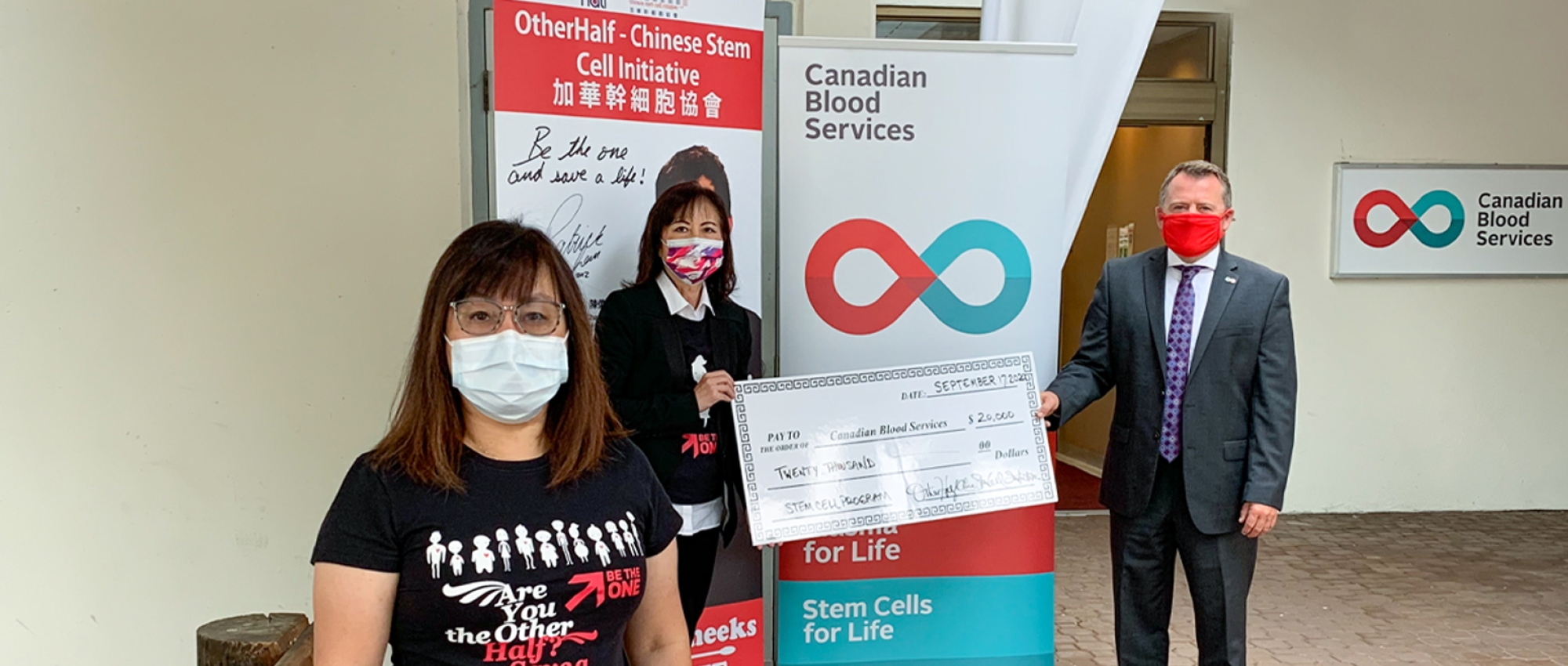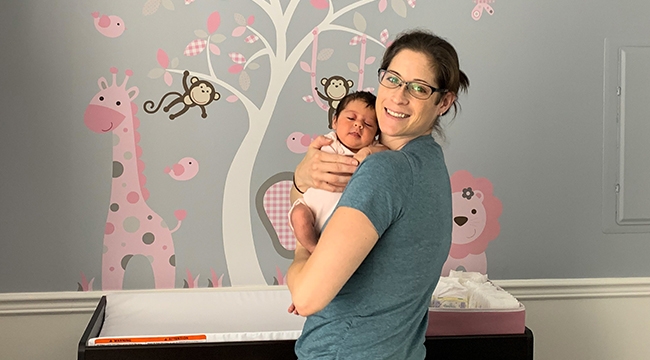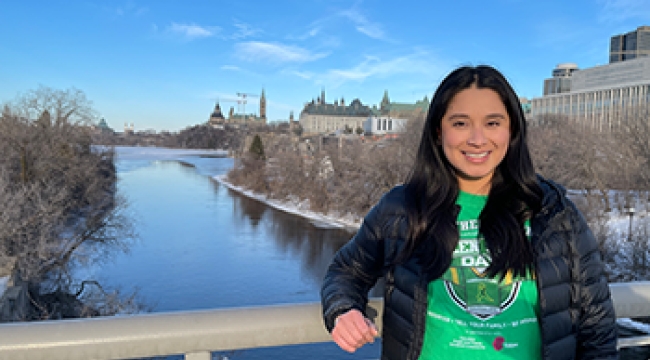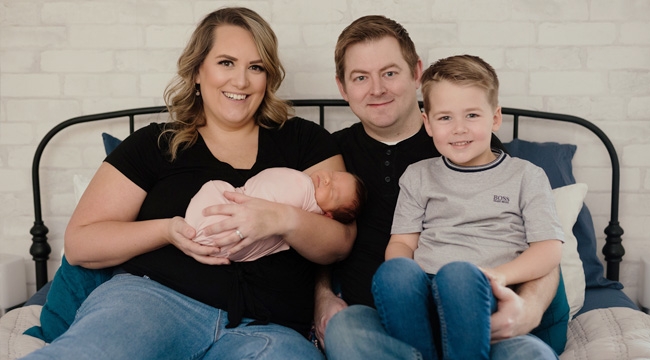How Canada’s Chinese community is helping diverse patients find stem cell matches
Unique initiatives support donor recruitment, development of new matching technology
It was back in 2008 that Susan Go first heard about a Chinese-Canadian patient in her community who was having a difficult time finding a matching donor for a stem cell transplant.
Purely out of curiosity, Susan dug a bit deeper to learn more about this patient’s challenge. She was shocked at what she discovered: fewer than one per cent of potential donors in Canada’s national stem cell registry were of Chinese origin.
Stem cells, specifically blood stem cells, are immature cells that can develop into any cell present in the bloodstream. Stem cell transplants can treat more than 80 diseases and disorders, but for the transplant to be successful, donor and recipient must be a close genetic match. For the 75 per cent of patients who don’t find a match within their own families, they are most likely to find it in a donor who shares their ethnic background.
The discovery that prospective donors of Chinese ancestry were significantly under-represented on the registry — and the knowledge that many of her own friends, family members or neighbours of diverse ethnicities could also run into life-threatening barriers should they ever require a stem cell transplant — is what prompted Susan and a group of her close friends to form OtherHalf—Chinese Stem Cell Initiative.
Since 2009, with the support of Canadian Blood Services, OtherHalf has been on a mission to educate Chinese Canadians about the urgent need for more ethnically diverse donors to join Canada’s Lifeline. They have done that with swabbing events across the country, student ambassador initiatives and appeals to eligible volunteer donors through Chinese-language media.
“We found that there was a lot of misunderstanding about stem cell and cord blood donation in the Chinese community and other diverse communities,” said Susan.
“Many people had been hesitant to sign up because they thought [stem cell donation] would be detrimental to their own health. We have helped to educate them that not only is donating safe, but it also can help save a life.”
Over the years, Susan and her team have expanded their awareness-building activities beyond the Chinese community — and have also learned that educating more ethnically diverse donors to join the stem cell registry and public cord blood bank completes only part of the puzzle.
That’s why when OtherHalf learned of Canadian Blood Services’ plan to implement new technology at its testing facilities– technology to make more stem cell matches possible, and faster — Susan and her colleagues reached out to make a generous financial contribution. In early 2020, OtherHalf matched, dollar-for-dollar, all financial gifts received through Canadian Blood Services’ winter fundraising appeal to help fund this new technology for the stem cell program.
Thanks in part to their $20,000 pledge, more than $40,000 was raised in support of innovative matching technologies. These technologies will help to reduce patient wait times, limit transplant-related risks and ultimately improve outcomes for those in need of a lifesaving stem cell transplant. It’s especially encouraging news for ethnically diverse patients, for whom the matching process can be particularly challenging.
Representatives from OtherHalf presented David Patterson, director of donor relations at Canadian Blood Services with a cheque for this generous $20,000 donation on Thursday, Sept. 17, during a physically distanced ceremony in Vancouver, B.C.
In the decade since OtherHalf began, diversity has grown significantly within Canadian Blood Services Stem Cell Registry. Today, 32 per cent of Canada’s potential stem cell donors are ethnically diverse. Also thanks in no small part to OtherHalf’s continued support, seven percent of those registered are of Chinese origin.
‘We can all make a difference by not being indifferent’
However, there is still much more work to be done. That’s a message that financial donor and stem cell recipient Tom Wong has been sharing publicly since he found out he needed to find a matching donor of his own, almost six years ago.
In 2014, Tom learned he had myelodysplastic syndrome (MDS), a rare form of blood cancer. His best chance for a cure was to have a stem cell transplant using a sibling donor, but when his sisters were tested, they did not provide the match he needed.
Tom, a Chinese-Canadian, turned to Canadian Blood Services Stem Cell Registry and realized quickly that he was facing an uphill challenge. His best chance for a match would likely come from a male of his own ethnicity – however, Chinese donors were hard to come by.
Like Susan Go, he was shocked at this discovery and decided to act.
Tom began going out to universities and community events to build awareness of the disproportionately low representation of many ethnic groups on the national registry, and to encourage eligible people in those groups to join it.
Beyond awareness building more broadly, he hoped that his public campaign would help turn up his own perfect match.
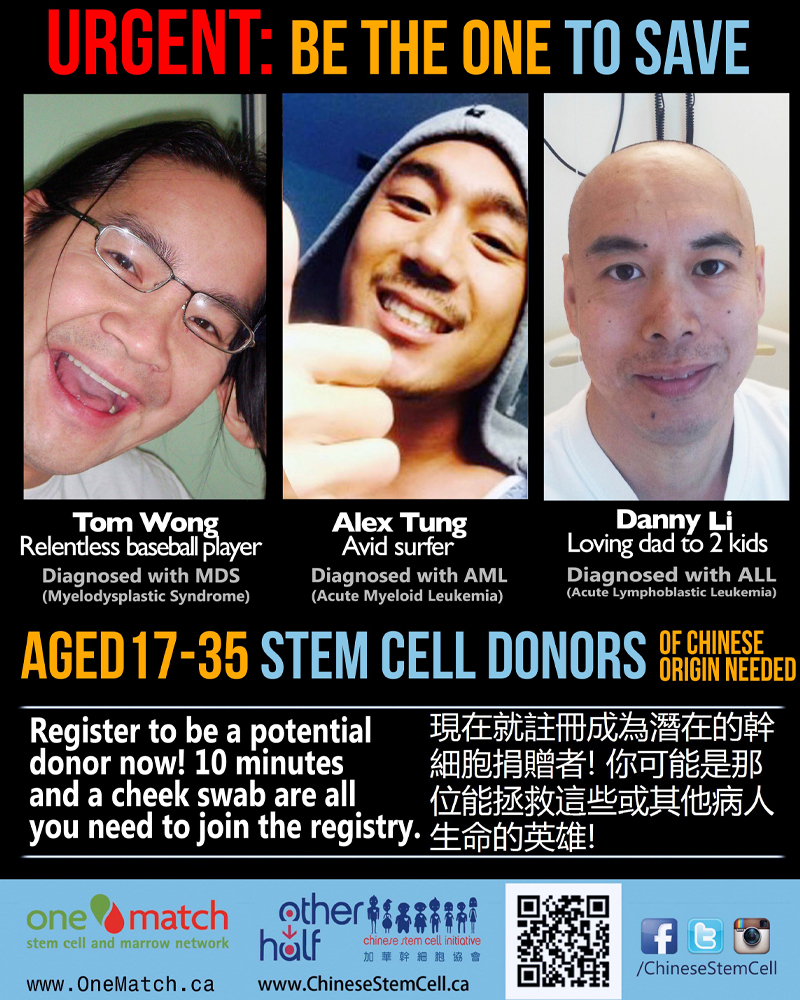
As part of his public campaign to find a match, Tom Wong partnered in 2014 with OtherHalf-Chinese Stem Cell Initiative and Canadian Blood Services’ Stem Cell Registry (formerly known as One Match Stem Cell and Marrow Network) to encourage healthy people of Chinese descent to register to become stem cell donors.
Almost a year went by from the day Tom was diagnosed with MDS, to the day he received his transplant: Aug.26, 2015. Despite his long wait for a match, he feels lucky that a donor was found.
That’s why every year, Tom celebrates his stem cell transplant anniversary by throwing a “birthday party” that collects toys for children with cancer, and also raises funds to help support Canadian Blood Services’ stem cell programs and initiatives. He also continues to build awareness about the importance of increasing diversity in Canada’s stem cell registry through speaking engagements in his community, and he recently organized an online stem cell swabbing event through his workplace.
This past August, Tom “turned five” in stem cell years. His regular celebrations were put on hold due to the COVID-19 pandemic, but he’s already dreaming up ways to commemorate his sixth stem cell birthday in 2021 by helping more patients in need.
“It’s really a numbers game – so I hope more people continue to register to donate, and to give financially to help bridge the gap. I’d really love to see the number of diverse registrants continue to go up,” said Tom.
“One of the reasons I do what I do is because I think we can all make a difference for patients. We can do this by not being indifferent – and by taking action in any way we can.”
Financial gifts play an important role in helping to grow and diversify Canadian Blood Services Stem Cell Registry and our public cord blood bank. Financial supporters help us recruit more — and more ethnically diverse — volunteer donors through awareness, education and recruitment programs and initiatives.
Financial gifts directed to the area of stem cells also help to drive research and innovation in transplantation and transfusion medicine and support the implementation of new technologies that help match recipients to lifesaving donors, faster. Learn more about the impact of financial giving.
